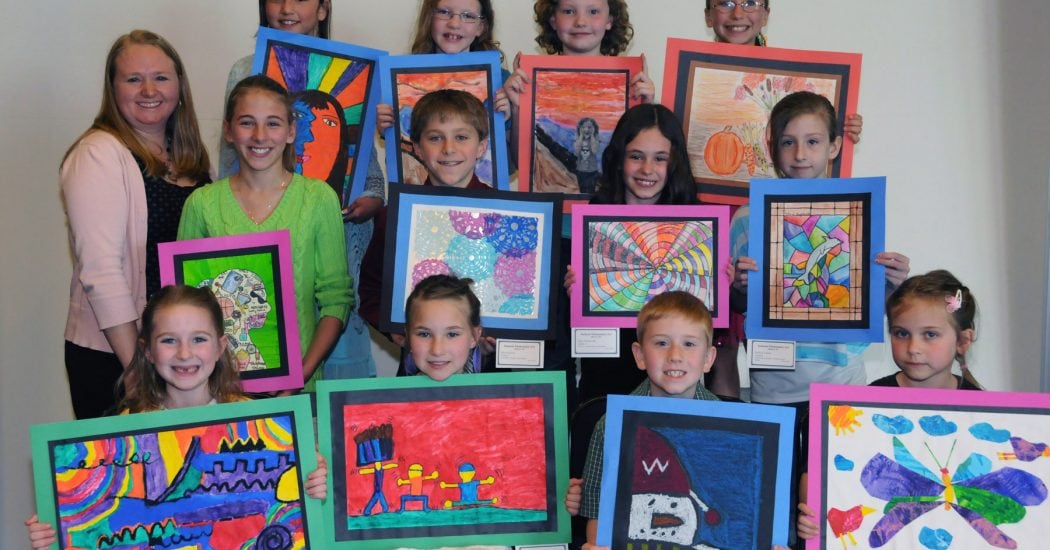Last Sunday afternoon, we walked around our neighbourhood in East Oxford, visiting artists in their studios and homes. What a fantastic way to get to know this community, and what a wonderful look into the art world! It is Art Week here, and just like during the studio tours in Nova Scotia, it is a chance to explore the vibrant artistic community we live in. The arts are hugely important to people and to communities.

Arts education is the latest aspect of education threatened in Nova Scotia since the Glaze report. McNeil certainly isn’t letting the grass grow under his feet in implementing his neo-liberal agenda for education. Getting rid of elected school boards, traditionally the go-to place for parents with issues, was the first step in a long future of standardization, centralization and cutbacks. We have already seen the looking glass reality that is the government’s response to the inclusion report – “190 new hires” – which ends up being closer to zero when you count the resource teachers and guidance counsellors being cut at the same time. “The number of learning centre FTEs will go to 221.5 from 197 this year, including 20 that were added in November 2017” – to follow what is going on we’ll need to pay close attention to words like those in italics – note that the 24.5 new FTE’s this year include 20 that were already added last year.
Much has been written about the importance of arts education – there is overwhelming evidence that it improves academic outcomes, encourages creativity and, like sports, is a way for many children to feel engaged in school. Appreciation of and the ability to create art or music is fundamental to well-being for adults – I know I owe my love of classical music to a Grade 7 music teacher who had us following along annotated scores of symphonies as we listened (if she had introduced us to opera, it might not have taken me 40 years to appreciate it!).
If you have any doubts about the value of arts education, take a look at the websites of the private schools and see what they offer. By reducing arts education, we are once again widening the gap between those who already have and those who have not. Rich parents will always be able to provide private lessons and classes for their children. Schools in wealthy neighbourhoods will always be able to fundraise for extra artistic opportunities. Public education, to be truly equitable, needs to provide good arts education for all.
In arts education, as in many other ways, Britain shows us what not to do. A few years ago, Britain introduced a new qualification, the EBacc, for children finishing the first round of secondary exams, the GCSEs. In order to qualify, students would have to get a passing grade in 5 “core” subjects – English, math, history or geography, a foreign language and science. An arts subject was not a requirement – this narrowing of the curriculum meant that students were less likely to choose an arts course, arts programmes were more likely to be cut when money is tight (as it always is here) and eventually it could disappear altogether from secondary schools. Recently, over 100 artists and another group of musicians wrote an open letter to the government condemning the policy.
Arts education in primary schools in Britain has also been a casualty of the ever-increasing worry about standardized test results, which only measure the basic subjects. Interestingly, I read this week that the number of primary-aged children in Britain seeking mental health help had risen by a third in the past year alone to almost 10% of the population. Is this a coincidence, or is this related to the lack of a time within the day when children can focus on self-expression and be creative? There is a link between mental health and arts education, and we may find that expanding the arts in school will do more to improve our children’s mental health than all the psychiatrists in China. As the scientist Charles Darwin said, “the loss of these tastes (appreciation of the arts) is a loss of happiness, and may possibly be injurious to the intellect, and more probably to the moral character, by enfeebling the emotional part of our nature.”
I expect that what is happening in Halifax schools is the beginning of the standardization of arts education across the province – because Halifax voters chose to pay for supplementary funding for the arts, Halifax has traditionally had good art and music programs. Unfortunately, instead of bringing the province up to the level of metro schools, Doug Hadley “CEO” of HRCE says, “the provincial curriculum calls for visual arts to be integrated into classroom instruction, so starting in September, it will be delivered by the classroom teacher in those schools ‘as it is in all other elementary schools in the HRCE and the province.”
I’m afraid, indeed I’m sure, that by “integration into classroom instruction” he means overworked classroom teachers, already burdened by the 101 things they need to be teaching, will struggle to fit in a colouring or pasting activity each week. I’m a huge fan of integration of the arts – indeed I have written extensively about it in “Best School”. However, it needs to be done with the collaboration of a specialist teacher who can pass on ways of seeing, techniques of expression and skill development methodologies that the regular non-artist classroom teacher just does not know. Children need direct contact with these specialists. The new reality in Halifax schools is that the specialists will be assigned to a family of schools, which could include thousands of children. There will be 9 specialists supporting 40 schools – it’s hard to believe that they will be able to provide meaningful arts education.
Nova Scotia has a detailed curriculum full of outcomes and goals. It should be intended as a baseline of what schools can do, a kind of bare minimum. Schools, left to their own initiative, will always aim higher than the minimum that the curriculum dictates – after all children do not stop learning after the outcomes are met. This government seems intent on making sure that all provincial schools will stick to the bare minimum when it comes to arts education. This will be a boon to private schools and after-school arts education providers and a slap in the face to equity for everyone else.
This article was originally posted on Molly Hurd’s blog: The Inquiring Teacher. It’s re-posted here with Molly’s kind permission.
Molly Hurd’s perspectives on education have been developed out of her wide variety of teaching experiences in northern Quebec, rural Nova Scotia, Nigeria, Tanzania and Britain. She was also a teacher and head teacher at Halifax Independent School for twenty years. She believes passionately that keeping children’s natural love of learning alive throughout their school years is one of the very best things a school can do for its students. She is the author of “Best School in the World: How students, teachers and parents have created a model that can transform Canada’s public schools” published by Formac Publishing in 2017.




If it were not for our teachers, probably working in defiance of the government’s mandate, Nova Scotia’s education system would be a complete disaster. McNeil, his Liberal government, and the few corporate heads and shills (including AIMS) who advise or control this government are fixated on destroying what our teachers have been able to do. Hewers of wood and drawers of water is what they want of Nova Scotians. After all, letting young people have access to the arts might get them thinking revolutionary things. Things such as; we’re entitled to more than precarious work, low wages, and poverty. Reducing access to the arts is not about the budget, it’s about ideology.